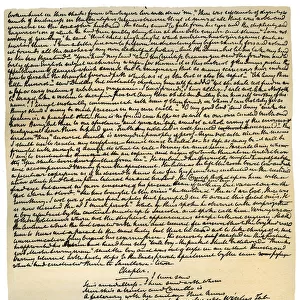Home > Popular Themes > Human Body
LM of hatching blastocyst in IVF
![]()

Wall Art and Photo Gifts from Science Photo Library
LM of hatching blastocyst in IVF
Light micrograph showing a hatching blastocyst, a six days-old human embryo. The blastocyst (left) at six days post-fertilisation is a hollow ball of cells with a fluid centre. Most of these cells will form the placenta & membranes, & only a small group (the inner cell mass) form the embryo proper. Here, the blastocyst is seen emerging from a hole in the zona pellucida (a protein " shell" around the oocyte). At this stage in nature, the blastocyst would be in the uterus & ready to begin implanting into the endometrium (the uterine lining). This image was produced in the course of In Vitro fertilisation research
Science Photo Library features Science and Medical images including photos and illustrations
Media ID 6455615
© ANDY WALKER, MIDLAND FERTILITY SERVICES/ SCIENCE PHOTO LIBRARY
Blastocyst Embryo Hatching In Vitro Fertilisation Light Micrograph
EDITORS COMMENTS
This print captures the intricate beauty of a hatching blastocyst, providing a glimpse into the early stages of human life. Taken using a light micrograph, this image showcases a six-day-old embryo formed through in vitro fertilization (IVF). The blastocyst, depicted on the left side of the frame, appears as a delicate hollow ball composed of cells surrounding a fluid-filled center. Within this remarkable structure, most cells will go on to develop into crucial components such as the placenta and membranes. Only a small group known as the inner cell mass holds the potential to form the actual embryo itself. Here, we witness an extraordinary moment as the blastocyst emerges from an opening in its protective protein shell called zona pellucida. In nature's course, at this stage, it would be within the uterus and prepared for implantation into the endometrium –the lining that nurtures pregnancy. This particular image was captured during research conducted in IVF laboratories where scientists strive to understand and enhance fertility treatments. The Science Photo Library presents this awe-inspiring photograph not for commercial purposes but rather to showcase scientific advancements and provide insight into our understanding of embryonic development. It serves as both an educational tool and testament to humanity's ongoing quest for knowledge about reproduction and early human life.
MADE IN THE UK
Safe Shipping with 30 Day Money Back Guarantee
FREE PERSONALISATION*
We are proud to offer a range of customisation features including Personalised Captions, Color Filters and Picture Zoom Tools
SECURE PAYMENTS
We happily accept a wide range of payment options so you can pay for the things you need in the way that is most convenient for you
* Options may vary by product and licensing agreement. Zoomed Pictures can be adjusted in the Basket.










